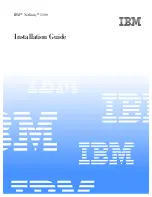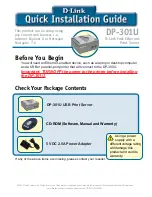
RJ-45
Standard connectors used in Ethernet networks. RJ-45 connectors are
similar to standard RJ-11 telephone connectors, but RJ-45 connectors
can have up to eight wires, whereas telephone connectors have four.
Server
A computer that provides its resources to other computers and
devices on a network. These include print servers, Internet servers and
data servers. A server can also be combined with a hub or router.
Site survey
The process whereby a wireless network installer inspects a location
prior to installing a wireless network. Site surveys are used to identify
the radio- and client-use properties of a facility so that access points
can be optimally placed.
SSL
Secure Sockets Layer. A commonly used encryption scheme used by
many online retail and banking sites to protect the financial integrity of
transactions. When an SSL session begins, the server sends its public
key to the browser. The browser then sends a randomly generated
secret key back to the server in order to have a secret key exchange
for that session
Sub network or Subnet
Found in larger networks, these smaller networks are used to simplify
addressing between numerous computers. Subnets connect together
through a router.
Switch
A type of hub that efficiently controls the way multiple devices use the
same network so that each can operate at optimal performance. A
switch acts as a networks traffic cop: rather than transmitting all the
packets it receives to all ports as a hub does, a switch transmits
packets to only the receiving port.
TCP
Transmission Control Protocol. A protocol used along with the Internet
Protocol (IP) to send data in the form of individual units (called
packets) between computers over the Internet. While IP takes care of
handling the actual delivery of the data, TCP takes care of keeping
track of the packets that a message is divided into for efficient routing
through the Internet. For example, when a web page is downloaded
from a web server, the TCP program layer in that server divides the
file into packets, numbers the packets, and then forwards them
individually to the IP program layer. Although each packet has the
same destination IP address, it may get routed differently through the
network. At the other end, TCP reassembles the individual packets and
waits until they have all arrived to forward them as single message.
82
www.cooperbussmann.com/BussmannWirelessResources
Cooper Bussmann BU-245U-E Wireless Ethernet & Device Server User Manual
Receive Sensitivity
The minimum signal strength required to pick up a signal. Higher
bandwidth connections usually have less receive sensitivity than lower
bandwidth connections.
Router
A device that forwards data from one WLAN or wired local area
network to another.
SNR
Signal to Noise Ratio. The number of decibels difference between the
signal strength and background noise.
Transmit Power
The power usually expressed in mW or dBm that the wireless device
transmits at.
MAC Address
Media Access Control address. A unique code assigned to most forms
of networking hardware. The address is permanently assigned to the
hardware, so limiting a wireless network's access to hardware - such
as wireless cards - is a security feature employed by closed wireless
networks. But an experienced hacker - armed with the proper tools -
can still figure out an authorized MAC address, masquerade as a
legitimate address and access a closed network.
Every wireless 802.11 device has its own specific MAC address
hard-coded into it. This unique identifier can be used to provide
security for wireless networks. When a network uses a MAC table,
only the 802.11 radios that have had their MAC addresses added to
that network's MAC table will be able to get onto the network.
NAT
Network Address Translation: A network capability that enables a
number of computers to dynamically share a single incoming IP
address from a dial-up, cable or xDSL connection. NAT takes the
single incoming IP address and creates new IP address for each client
computer on the network.
NIC
Network Interface Card. A type of PC adapter card that either works
without wires (Wi-Fi) or attaches to a network cable to provide two-
way communication between the computer and network devices such
as a hub or switch. Most office wired NICs operate at 10 Mbps
(Ethernet), 100 Mbps (Fast Ethernet) or 10/100 Mbps dual speed.
High-speed Gigabit and 10 Gigabit NIC cards are also available. See
PC Card.
Proxy Server
Used in larger companies and organizations to improve network
operations and security, a proxy server is able to prevent direct
communication between two or more networks. The proxy server
forwards allowable data requests to remote servers and/or responds
to data requests directly from stored remote server data.
3A1576Rev1.7













































